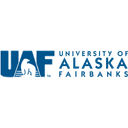This course is part of Synthetic Aperture Radar (SAR): Applications.
This comprehensive course introduces Synthetic Aperture Radar (SAR) technology for disaster monitoring and management. Students learn to leverage SAR's unique ability to observe Earth's surface through darkness, rain, clouds, and smoke. The curriculum covers mathematical principles, data analysis techniques, and practical applications in disaster mapping, including flood monitoring, volcanic activity assessment, and landslide detection. Through hands-on exercises using Jupyter Notebooks, participants gain practical experience analyzing real-world disaster events.
4.8
(5 ratings)
5,883 already enrolled
Instructors:
English
English, Spanish
What you'll learn
Master SAR image interpretation and phase information analysis
Select optimal sensors for specific disaster monitoring applications
Create RGB visualizations from multi-temporal and multi-polarization data
Apply SAR techniques for flood and deforestation mapping
Use interferometric SAR to measure surface deformation
Skills you'll gain
This course includes:
PreRecorded video
Graded assignments, exams
Access on Mobile, Tablet, Desktop
Limited Access access
Shareable certificate
Closed caption
Get a Completion Certificate
Share your certificate with prospective employers and your professional network on LinkedIn.
Created by
Provided by

Top companies offer this course to their employees
Top companies provide this course to enhance their employees' skills, ensuring they excel in handling complex projects and drive organizational success.





There are 4 modules in this course
This course provides comprehensive training in Synthetic Aperture Radar (SAR) technology for disaster monitoring applications. Students learn the fundamental principles of SAR remote sensing, including image interpretation, interferometric analysis, and practical applications in disaster management. The curriculum covers advanced topics such as flood mapping, volcanic activity monitoring, and landslide detection. Through simulated disaster response exercises, participants gain hands-on experience analyzing real-world SAR data sets.
Course Introduction and Basic Capabilities of SAR & InSAR
Module 1
InSAR Time Series Analysis Techniques
Module 2
Disaster Monitoring using SAR Image Data
Module 3
Disaster Monitoring using InSAR Techniques
Module 4
Fee Structure
Individual course purchase is not available - to enroll in this course with a certificate, you need to purchase the complete Professional Certificate Course. For enrollment and detailed fee structure, visit the following: Synthetic Aperture Radar (SAR): Applications
Instructor

6 Courses
A Pioneering Leader in Radar Remote Sensing and Geospatial Education
Franz J. Meyer serves as Professor of Remote Sensing at the University of Alaska Fairbanks and Chief Scientist of NASA's Alaska Satellite Facility, where he has revolutionized radar remote sensing applications and education. After spending nearly two decades developing processing techniques for synthetic aperture radar (SAR) data with space agencies worldwide, he has established himself as a leading authority in radar remote sensing applications for natural hazard monitoring. His research spans surface deformation analysis, including earthquakes and volcanic eruptions, with significant contributions to ionospheric correction methods for SAR data and flood mapping using multi-temporal satellite imagery. As an educator, he has led transformative initiatives including the NASA-funded SAR Capacity Building Center at UAF, developing training materials and workshops focused on communities in Central and South America. His commitment to education earned him the prestigious IEEE Geoscience and Remote Sensing Society Education Award in 2024 for significant contributions to geoscience and remote sensing education. Known in the community as the "SAR evangelist," he has trained thousands of students globally through his edX courses in synthetic aperture radar, with nearly 8,000 students completing his three-course SAR series. His work has garnered over 4,300 citations, establishing him as a influential figure in remote sensing research and education while maintaining active collaborations with organizations in Niger, Nepal, Ecuador, Colombia, Costa Rica, India, Germany, and France.
Testimonials
Testimonials and success stories are a testament to the quality of this program and its impact on your career and learning journey. Be the first to help others make an informed decision by sharing your review of the course.
Frequently asked questions
Below are some of the most commonly asked questions about this course. We aim to provide clear and concise answers to help you better understand the course content, structure, and any other relevant information. If you have any additional questions or if your question is not listed here, please don't hesitate to reach out to our support team for further assistance.


